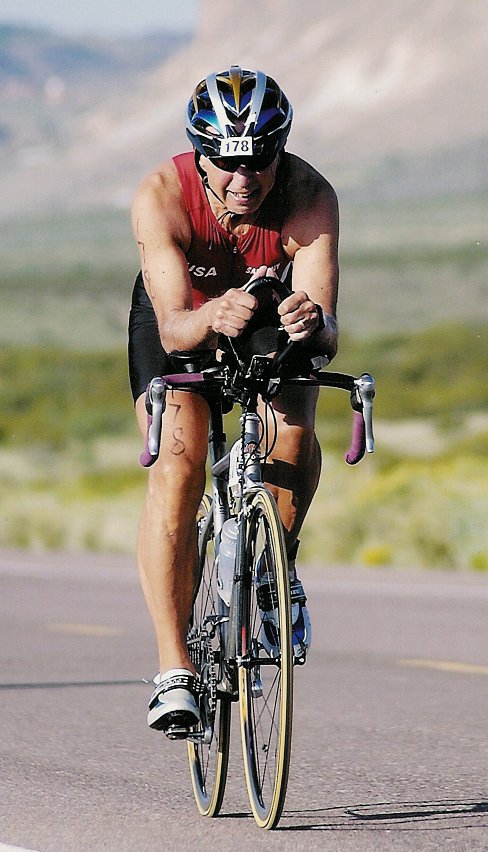







Bradsport.com - Brad's Blog

Brad's Blog -
This is Brad’s commentary on what’s happening, excluding commentary on politics and religion.
Brad's Blog#1
Wednesday, November 27, 2013
Trying to verify the accuracy of genealogical information is a never-ending challenge. Much of the information on the Internet contains inaccuracies and misinformation, yet it remains one of the best sources of facts to link people -- Leonards -- into one line or another. Here are some thoughts on the subject.My basic touchstone has been the manuscripts left by 19th Century genealogist Elisha Clark Leonard 1819-1894. While I have checked his work against other sources, I’ve found that he rarely made mistakes. He had certain advantages, in that many people in the 5th, 6th, 7th, and 8th generations after James Leonard were still alive or overlapped with people who were alive and could remember and be queried about earlier generations. He did check his work against town VR’s, but did not have census data to work from. He did some querying via correspondence. Where he frequently ran into dead ends was with families who joined the westward movement to Vermont, then New York, then Ohio, Indiana, Illinois, and Missouri. His grandson, George Marston Leonard 1880-1959 continued his work, in some cases getting as far as the 11th or 12th generation after James. He also seems to have been a careful researcher. His wife donated Elisha’s and George’s typescripts and manuscripts to the New England Historical Genealogical Society, the Old Colony Historical Society, and the New Bedford Library, for which we should be forever thankful.
I’ve found Fanny Leonard Koster’s book and charts to be less useful. If you can believe it, she’s traced our ancestry back to Adam and Eve. But what most bothers me is that she repeats the old canard that we descended from the Dacre Lennard family without question. Her charts, which usually aren’t sold with her book, contain some inaccuracies and list names without dates and places, but still are somewhat helpful. They are not nearly as extensive as Elisha’s and George’s work.
There are other manuscript sources that are useful. For example, Ruth Leonard Badger and Harriotte Standish Leonard created a manuscript “Leonard Dictionary,” listing several notebooks full of family research items concerning individual Leonards -- “pieces of the puzzle all laid out alphabetically.”
Other authors of family genealogies from the 19th Century have some of the difficulties and challenges that Elisha faced. Apparently, one game that 19th Century genealogists applied in contract research was to search for some member of English or other nobility to attach to a person’s ancestry. Another problem was that family data resources, such as the vital records of various jurisdictions, required physically visiting those jurisdictions. We are much more fortunate today with the resources of the Internet at our disposal.
When I started doing family research, I was following just my line of ancestry, as do the majority of people delving into family ancestry. I soon found that it wasn’t quite that simple, that there were five Joseph Leonards living in Middleborough, MA, in the 1700’s. To be relatively assured as to which Joseph was “mine,” I started a data base tracking all five, their parents, and their children. That grew to the 50,000 people I have in the data base today.
What I learned early was that just because you found a Nathaniel Leonard with approximately the right birth and death dates and places, marriages, and children, he wasn’t necessarily “yours” -- that is, the one you were looking for. Because given names were so common and so oft repeated among the generations of Leonards, it was easy to plug in the wrong Nathaniel, or Thomas, or James, or whatever in your family tree. And it got worse, as you found that others had attached the wrong birth, marriage, or death date to someone of that name. And that error was replicated as others picked it up. So everyone needed to be checked over and over, whatever the source.
My original goal was to complete the descendants of James to a bit over 1800, figuring that from that time on, descendants would appear in the every-name-index of the censuses from 1850 on. I wanted to make the good work of Elisha and George readily available, and I wanted to make it easy for people to construct accurate ancestral trees, at least for the Leonards.
As I find new Leonards who need to be plugged into a line, I usually start with verifying their existence through the VR’s, the Census files, or some other reputable source. There are sometimes errors in the VR’s, the most common one the error of omission. The census entries usually include some other family members, as well as rough dates and states of birth. Need I mention that census entries also include errors, whether caused by the census taker or the individual giving the information.
After having exhausted the VR’s, census files, or other documented source, I turn to the family trees posted in ancestry.com to see if anyone of that line has posted information. In some cases, the person is known to me from previous communication and known to be thorough. In that case, I might accept the facts as given. In most cases, there are a number of people who have posted a particular line, usually just the individuals in their direct line. If they list a lot of references and/or all the children and these all check across the board with census and other documented sources, then I list the conforming facts. Otherwise, I may riffle through, picking up a missing date or place or child or maiden name that would help in further research.
As a general rule, the closer someone is to my line, the more thoroughly that person has been researched and vetted. One of my early goals was to avoid errors, particularly in confusing someone with the same name with one of “mine” with the same name. That’s the easiest and most frequent error occurring in Leonard research.
Because any one entry may be the result of ten to twenty checks, it’s been difficult to achieve the “gold standard” in citing genealogical sources. What’s there is frequently from several sources and supported by a number of negative checks. If I listed all of these, I’ve have more footnotes than people by far, and it wouldn’t be all that helpful. I’ve also been hindered by my software not allowing me to do cites as footnotes to my notes section. My notes section frequently includes other sources, makes note of conflicting information I’ve found, and possible leads that may be of use in further searches.
New release
Website revisions
Wednesday, November 27, 2013
BradSport.com has changed, and is still undergoing minor changes for format and readability. Home page
Sunday, December 30, 2012
The home page for navigation is bradsport.com. Most pages open into the same browser window, unless the page goes to a link without the main main. If you go to a new window, you can close it once done reading. National Geographic Genome Project
Sunday, September 01, 2013
I have submitted my sample (spit and cheek rubbing.) Rec'd notice that my sample is at stage 4 in the processing, so should hear soon.Quick Links to Descendants of
James LeonardHenry Leonard
John Leonard
Solomon Leonard